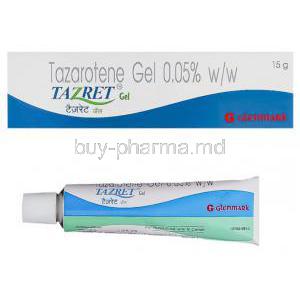Adapen, Adapalene Topical Gel
- Introduction to Adapen (Adapalene Topical Gel)
- Composition and Formulation of Adapen (Adapalene Topical Gel)
- Uses of Adapen
- Off-Label Uses of Adapen
- How Adapen Works
- Dosage and Administration of Adapen (Adapalene Topical Gel)
- Side Effects of Adapen
- Important Precautions
- Interactions with Other Medications
- Warnings and Contraindications
- Special Considerations in Administration
- Administration to Elderly
- Adjustments in Application for Older Skin
- Monitoring and Managing Long-Term Use
- Administration to Pregnant Women and Nursing Mothers
- Safety Profile During Pregnancy and Lactation
- Alternative Treatments and Comparative Risks
- Administration to Children
- Age-Appropriate Use and Safety Guidelines
- Efficacy and Tolerability in Pediatric Patients
- Handling and Storage
- Overdose Management of Adapen (Adapalene Topical Gel)
- Handling Precautions
Introduction to Adapen (Adapalene Topical Gel)
Also referred to as Adapalene Topical Gel, Adapen is a leading product in modern skincare, providing specialized treatment for acne vulgaris. A generation artificial retinoid, Adapen sets itself apart with its distinct way of working: It attaches to particular nuclear receptors in skin cells to regulate the differentiation and keratinization processes.
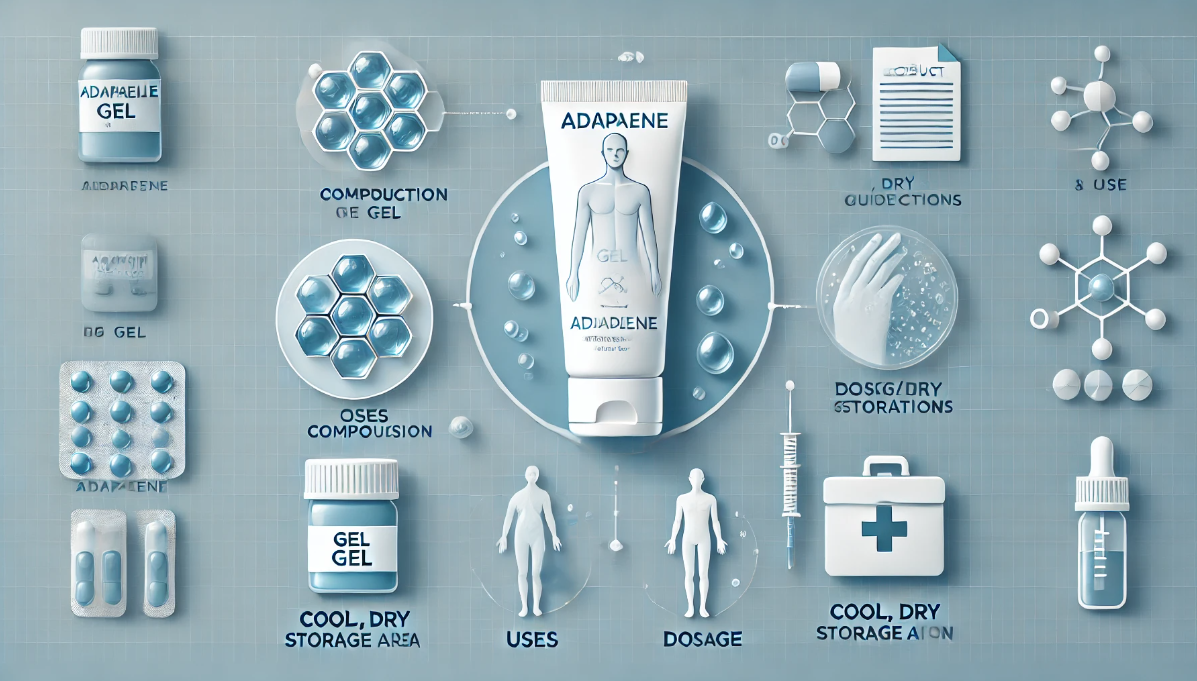
Overview of Adapen (Adapalene Topical Gel)
Adapen's design is specifically crafted for application on the skin, showcasing its effectiveness in clearing pores and decreasing inflammation. In contrast to other versions, Adapen receives praise for its reduced likelihood of irritating the skin, making it a popular option for controlling acne over an extended period.
Historical Development and FDA Approval Status
- Adapen, an advancement, in treating acne was introduced in the early 1990s after thorough pharmacological research.
- After successful clinical trials proving its safety and efficacy Adapen was granted FDA approval in 1996 marking a milestone in the realm of acne remedies.
Importance in Dermatological Treatments
Adapen is used in dermatology because it effectively treats acne while being well tolerated. This gel is especially important for patients who prefer a reliable option over older treatments, leading to better compliance and continued use with minimal discomfort.
Composition and Formulation of Adapen (Adapalene Topical Gel)
Adapen contains a crafted mix of active and inactive components each playing a vital role, in improving the effectiveness and durability of the medication. This gel is formulated to provide healing benefits targeted at treating acne while keeping the skin healthy.
Active Ingredients and Their Concentrations
Adapen contains adapalene as its active ingredient with either 0.1% or 0.3% concentrations. This helps regulate the processes related to the development of acne. The concentration is carefully chosen to ensure treatment with minimal risk of irritation.

Inactive Components of Adapen
The gel base of the product makes it easy to apply and helps it stick to the skin. Additionally, preservatives and stabilizers are included to keep the formula intact and effective for a period of time.
Description of Physical and Chemical Properties
Adapalene gel is known for its quality and ability to remain stable even when stored under various conditions. In terms of its chemical composition, adapalene is a compound that is less prone to oxidation than other retinoids. This property helps maintain its potency and efficacy over time.
Adapalene vs Tretinoin
Adapalene and tretinoin are both retinoids commonly employed to treat acne. Adapalene is known for irritating and is more stable when exposed to sunlight, making it a preferable option for individuals with sensitive skin who wish to use it during the daytime.
Adapalene vs Retinaldehyde
Adapalene, an artificial retinoid, impacts how keratinocytes behave compared to retinaldehyde, which is less powerful and mainly used for its anti-aging benefits.
Adapalene vs Retinol
Retinol is a form of retinoid compared to adapalene. Unlike adapalene, which is already active, retinol needs to be converted into retinoic acid in the skin to start working. This difference results in adapalene showing more noticeable improvements when used for acne treatment.
Adapalene and Benzoyl Peroxide Gel
This mix utilizes the qualities of adapalene along, with the bacteria fighting effects of benzoyl peroxide effectively addressing both inflamed and non inflamed acne spots.
Adapalene and Vitamin C
Blending vitamin C with adapalene can enhance protection against sunlight and help achieve a smoother skin tone, but it's important to apply them carefully to prevent any skin irritation.
Adapalene and Niacinamide
Niacinamide collaborates effectively with adapalene to fortify the skin barrier and diminish inflammation, improving the overall management of acne without causing any harsh side effects.
Adapalene and Hyaluronic Acid
Combining Hyaluronic acid with adapalene in your skincare routine can help keep your skin hydrated, reducing the dryness and peeling often linked to using retinoids.
Uses of Adapen
Adapen, well regarded for its effectiveness in treating acne, has expanded its usefulness in dermatology, effectively managing a range of skin issues. This versatility highlights its significance in dermatological treatment.
Primary Indications for Adapalene Topical Gel
Adapen is commonly recommended for treating acne vulgaris. Its effectiveness in controlling cell turnover and decreasing inflammation has established it as a component of acne management.
Role in Acne Treatment and Skin Health
Adapen helps keep the skin healthy by regulating keratinization and reducing the sticking together of skin cells in hair follicles. This stops the development of acne lesions known as micro comedones and supports the health of pores.
Comparative Effectiveness with Other Dermatological Treatments
- When looking at Adapen in comparison to benzoyl peroxide and topical antibiotics it shows results in reducing acne lesions over extended periods.
- Its ability to work well with medications makes it an excellent choice for combination therapies, often leading to better results.
Adapalene for Wrinkles
Recent studies indicate that Adapen might also help reduce the visibility of wrinkles by boosting cell renewal and promoting collagen production in the skin layers.
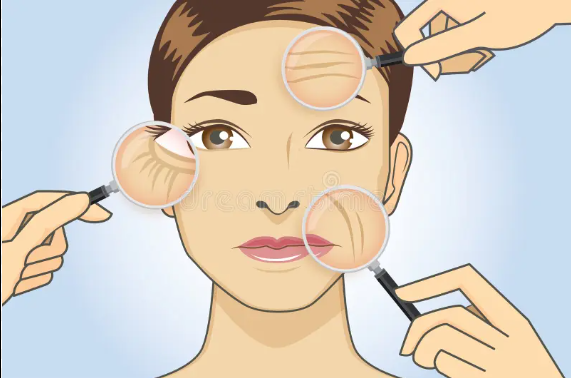
Adapalene Anti Aging
Adapalene's method of action also includes anti-aging benefits. Regular use has been shown to enhance the texture and tone of the skin, resulting in a youthful and resilient appearance.
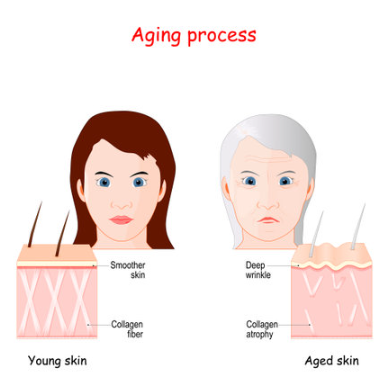
Adapalene for Stretch Marks
While mainly used to treat acne, Adapen is showing potential for handling stretch marks. Its impact on collagen formation and skin rejuvenation may help reduce the appearance of stretch marks, mainly when applied during the phases of their formation.
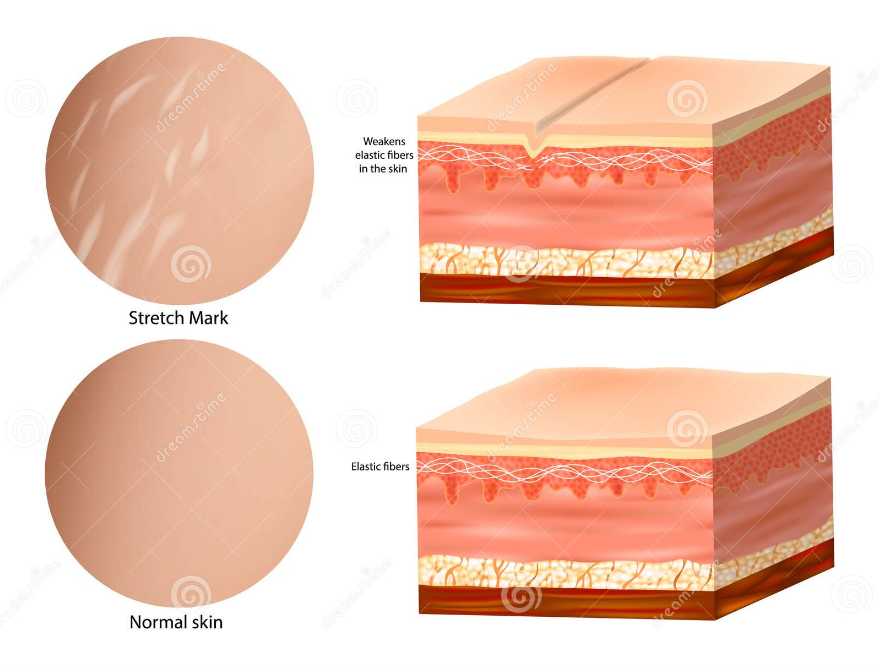
Adapalene for Acne Scars
Adapalene gel may help heal scars by speeding up the renewal of skin cells. This leads to a gradual reduction in scar tissue and encourages a smoother skin texture.
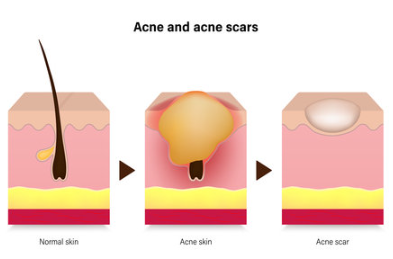
Adapalene Gel for Milia
Adapen is used to treat milia by helping to remove skin cells that block pores, which aids in resolving the small white cystic structures commonly seen on the face.
Off-Label Uses of Adapen
Adapen, known for treating acne, has also sparked interest in its ability to help with other skin conditions not officially approved. Researchers and doctors have investigated these uses through real-world studies and patient experiences, expanding its potential benefits.
Exploration of Non-Approved Uses in Dermatology
Studies exploring the uses of Adapen extend to different skin issues like keratosis pilaris and rosacea and as an additional treatment in skin cancer prevention plans, showcasing its flexible capabilities in dermatology.
Case Studies and Research Supporting Off-Label Benefits
- A crucial research study showed enhanced rosacea symptoms when Adapen was combined with oral antibiotics.
- Instances of patients have showcased its effectiveness in diminishing hyperpigmentation and enhancing skin quality in conditions unresponsive to traditional therapies.
Guidelines for Off-Label Prescribing by Healthcare Professionals
When recommending Adapen for uses not officially approved, it's crucial to evaluate the individual's skin condition, the possible advantages, and any associated risks. Dermatologists typically rely on evidence from reputable research and established medical standards to prioritize patient well-being and achieve the best results.
How Adapen Works
Adapens' success lies in its active engagement with skin cells, which creates a healing and revitalizing environment.

Mechanism of Action of Adapalene
Adapalene works by attaching to nuclear receptors, specifically retinoic acid receptors (RARs), which control gene expression related to cell differentiation and decrease inflammation. This focused activity aids in regulating the keratinization process and decreasing the occurrence of acne breakouts.
Interaction with Skin Cells at the Molecular Level
Adapalene influences different cellular functions necessary for the well-being of the skin. It affects the behavior of keratinocytes and helps stabilize melanocytes, both vital for preserving the skin's strength and color balance.
Long-Term Effects on Skin Health and Regeneration
Over time, using Adapen consistently has proven to support the renewal of skin cells, improving skin quality and minimizing visibility. Applying it regularly results in skin enhancing overall appearance and skin health.
Adapalene Before and After
Users and medical reports regularly confirm the benefits of Adapalene showcasing its ability to reduce acne enhance skin elasticity and improve skin tone. This marks a shift in how patients approach their skincare routines.
Dosage and Administration of Adapen (Adapalene Topical Gel)
Using Adapen properly is essential for achieving treatment results. This section explains the dose to use, how to apply it, and how to include it in your daily skincare routine based on different age groups and skin conditions.
Recommended Dosage for Different Age Groups and Conditions
Methods of Application for Optimal Results
Apply the gel to your clean and dry skin. Use an amount like a pea for your whole face, avoiding the eyes, lips, and sensitive areas. Gently spread it evenly without rubbing hard to prevent any irritation.
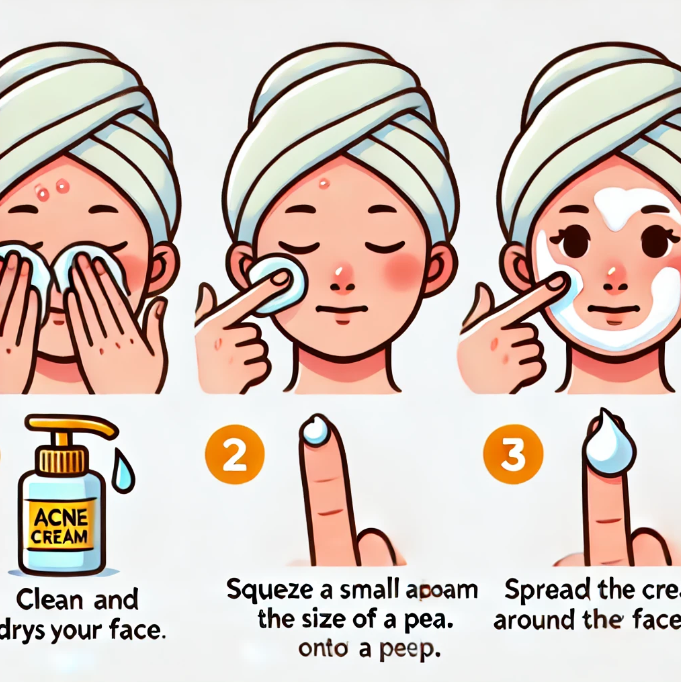
Tips on Integrating Adapen into Daily Skincare Routines
To include Adapen in your routine, it's important to consider using other skincare items as well. It's best to use comedogenic fragrance-free moisturizers and sunscreens along with Adapen to prevent dryness and boost protection from UV rays.
Side Effects of Adapen
Adapen is known for its ability to treat acne and various skin issues effectively. However, users and healthcare providers must be aware of the side effects, which can vary from minor to severe.

Common Side Effects Encountered by Users
- Usual responses may involve annoyance, redness, and dryness, especially in the initial weeks of treatment.
- It is possible to experience photosensitivity, so it's essential to apply broad-spectrum sunscreen while undergoing therapy.
Potential Severe Side Effects and Their Symptoms
In rare cases, severe reactions may occur, such as severe skin irritation, swelling, and increased sensations of burning or itching. If you experience these symptoms, it is recommended that you seek medical help.
Statistical Data on Side Effect Occurrence Rates
Research indicates that 10 15% of individuals may encounter significant side effects, particularly in the early stages of using Adapalene as the skin adapts to it.
Adapalene Purge
During the stage of using Adapalene, known as the 'purge,' it is expected to experience a temporary increase in acne breakouts. This happens as the skin cell turnover speeds up, bringing impurities to the surface. This phase usually lasts for around 4 to 6 weeks.
Adapalene Skin Peeling
Peeling is caused by the exfoliating qualities of Adapalene, which aid in shedding dead skin cells and gradually enhancing skin texture.
Adapalene Side Effects Long Term
When Adapalene is used correctly, long-term side effects are uncommon. Most people can tolerate use well, but a few may face ongoing dryness or irritation, which often improves by adjusting how often they apply it or the strength of the product.
Important Precautions
When using Adapen (Adapalene Topical Gel), it's essential to follow precautions to guarantee safety and effectiveness, especially for new individuals or sensitive skin types.
Precautionary Measures for New Users
New users should start by introducing Adapen and keeping an eye on how their skin reacts. At first, you might only use it every night, gradually increasing to nightly application as your skin gets used to it. Remember that being mindful of sun sensitivity and applying sunscreen daily is crucial.
Guidelines to Follow in Case of Adverse Reactions
- Please stop using it away if you experience severe irritation, swelling, or allergic reactions and seek advice from a healthcare professional.
- If you are dealing with irritation, you might want to try using it less often or switch to a product with a lower concentration if the discomfort persists.
Special Considerations for Sensitive Skin Types
For those with skin, it's best to choose the milder version of Adapalene (0.1%) and consider using a protective cream to reduce any possible adverse reactions. Doing a patch test before applying it all over your face is advisable to check how your skin reacts.
Interactions with Other Medications
Adapen could interact with medications and beauty products, changing its effectiveness and safety characteristics. It is essential to be aware of these interactions when overseeing treatments.
Common Drug Interactions and Their Implications
When using acne treatments alongside Adapen, such as products with benzoyl peroxide, salicylic acid, or sulfur, it may cause more irritation to the skin. Combining retinoids with Adapen could result in vitamin A toxicity or additional irritating effects.
How to Manage Polypharmacy in Dermatological Care
Managing a patient's health effectively requires examining all their medications, including those bought over the counter and supplements. Working with pharmacists and other healthcare professionals is crucial to making necessary dosage adjustments or replacing medications that may interact negatively.
Effects of Cosmetic Products on Adapenâs Efficacy
Some beauty items containing oils might lessen the impact of Adapalene by forming a barrier that hinders its absorption. Products with alcohol or harsh ingredients can also lead to drier and irritated skin, removing the advantages of using Adapen.
Warnings and Contraindications
Adapen, also known as Adapalene Topical Gel, should be used carefully and avoided in certain clinical situations to prevent possible health risks and negative effects.

Specific Conditions Under Which Adapen Should Be Avoided
- If a person is allergic to adapalene or any of the ingredients in the gel, they should not use it.
- Adapen could make eczema or seborrheic dermatitis worse for those who have these conditions.
Risk Factors That Increase Vulnerability to Adverse Effects
Excessive exposure to the sun, using cleaning products, or having cosmetic treatments while using Adapen can raise the risk of experiencing significant skin irritation and harm.
Legal and Medical Advisories for Users
Users must carefully follow all instructions provided with the package and take into account any legal and medical guidance that comes with the medication in order to use it safely and minimize any potential risks.
Special Considerations in Administration
Adapen administration involves using strategies for various patient groups to enhance effectiveness and reduce potential risks.
Administration to Elderly
- Elderly individuals might have increased sensitivity to Adapalene, so changes in how much and how often it is applied may be necessary.
- It's important to keep an eye on their skin health and protective barrier to avoid any skin problems in this age group.

Adjustments in Application for Older Skin
For older people, it might be helpful to use Adapen often or opt for a milder formula to accommodate the natural thinning of the skin and reduce the oil production that comes with aging.
Monitoring and Managing Long-Term Use
Regularly monitoring individuals who have been using Adapen for a period is crucial to identify any skin changes or adverse reactions. It is recommended that evaluations be scheduled with a dermatologist to assess the need to continue the treatment.
Administration to Pregnant Women and Nursing Mothers
Special attention is taken when administering Adapen to women and nursing mothers because there is limited data on its safety in these groups.

Safety Profile During Pregnancy and Lactation
While it's believed that topical Adapalene has limited absorption into the bloodstream, it's essential to weigh the benefits against any possible risks to the baby before using it during pregnancy or while breastfeeding.
Alternative Treatments and Comparative Risks
During pregnancy and breastfeeding, it might be better to consider treatment options that are known to be safe. It's important for healthcare providers and patients to have conversations, about these choices.
Administration to Children
Adapen may be administered to children aged 12 and above under close monitoring and following an assessment of the trade-off between effectiveness and possible adverse reactions.

Age-Appropriate Use and Safety Guidelines
Adhering to age-related safety protocols is crucial when administering Adapen to children, particularly emphasizing gentle to moderate treatment routines.
Efficacy and Tolerability in Pediatric Patients
Adapen has shown effectiveness in treating acne in children with an acceptable tolerability profile. However, it is advisable to monitor for any signs of skin irritation.
Handling and Storage
Proper handling and storage of Adapen (Adapalene Topical Gel) are crucial to ensuring its effectiveness and stability.
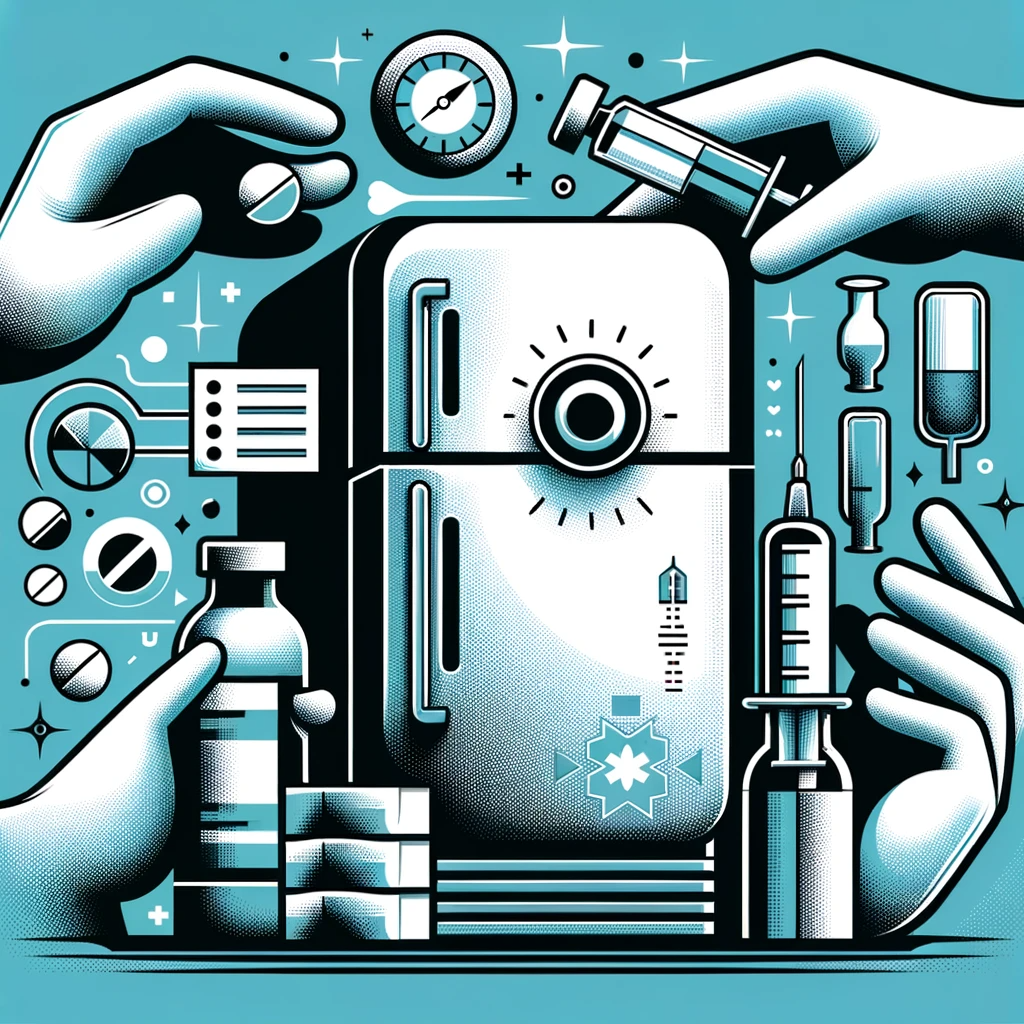
Optimal Conditions for Preserving Adapenâs Efficacy
- Remember to store the product in a dry place shielded from sunlight and heat to maintain the effectiveness of its ingredients.
- Make sure to seal the tube when not using it to protect it from air and moisture exposure.
Instructions for Safe Disposal of Expired or Unused Gel
Unused or expired Adapen should be appropriately discarded to protect people and the environment. It is recommended that the item be returned to a pharmacy for disposal or adhere to local guidelines on pharmaceutical product disposal.
Impact of Environmental Factors on Product Stability
High levels of heat, sunlight, and moisture can affect the chemical stability of Adapalene, which may lead to a decrease in its efficacy. Therefore, it is crucial to store it to maintain its desired strength.
Overdose Management of Adapen (Adapalene Topical Gel)
Although it's rare for an overdose of Adapen to happen because it's applied topically, it's crucial to know how to handle use for safety reasons.
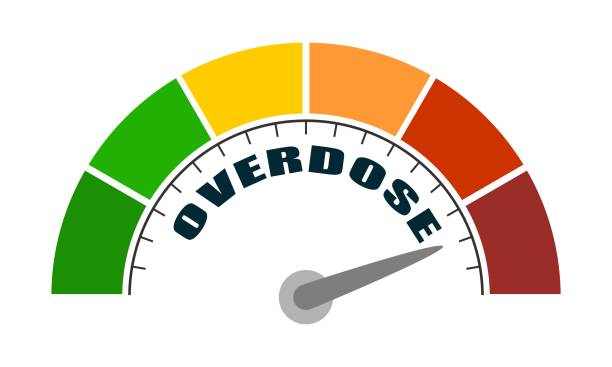
Symptoms and Immediate Actions to Take in Case of Overdose
- Signs of taking much could be intense skin discomfort, redness and flaking.
- You should wash the impacted spot with gentle soap and water and stop using it until you talk to a healthcare professional.
Long-term Health Implications of Excessive Use
Frequent or excessive use of Adapen could result in lasting skin irritation and damage, to the skins protective barrier, which might raise the chances of developing additional skin infections or dermatitis.
Support and Resources Available for Overdose Incidents
Health professionals and poison control facilities offer assistance and advice in handling cases of overdose ensuring treatment and preventing additional issues.
Handling Precautions
Adapen should be used cautiously to avoid exposure and guarantee successful treatment results.
Best Practices for Handling and Applying Adapen
When using Adapen, ensure your hands and skin are clean and dry. Use a small quantity and avoid sensitive areas like the eyes, lips, and inside of the nose.
Personal Protective Measures During Application
If your skin is sensitive, you might want to consider using gloves without latex when applying Adapen to prevent any irritation on your hands.
Procedures for Accidental Contact with Eyes or Mucous Membranes
If you accidentally get something in your eyes or on membranes, rinse the affected area thoroughly with water. If the irritation doesn't go away, seek advice to avoid any potential harm.
Adapen, Adapalene Topical Gel FAQ
- What is Adapalene
- What not to mix with Adapalene
- What can you use with Adapalene
- What happens if you use expired Adapalene
- What is the difference between Adapalene and Tretinoin
- When does Adapalene start working
- When to apply Adapalene gel in skincare routine
- When to stop using Adapalene
- Does Adapalene help with wrinkles
- Does Adapalene help with Hyperpigmentation
- Does Adapalene cause purging?
- Does Adapalene bleach clothes?
- Does Adapalene expire?
- Can I use Salicylic Acid in the morning and Adapalene at night
- Can you use Adapalene and Benzoyl Peroxide together?
- Can I use Hyaluronic Acid with Adapalene?
- How to start Adapalene
- How long does Adapalene purge last
- How long for Adapalene to work
- How to use Adapalene gel with moisturizer
- How long should I wait to apply moisturizer after Adapalene
- How long does it take to see results from Adapalene
- How to use Benzoyl Peroxide and Adapalene together
- Is Adapalene a Retinol?
- Is Adapalene the same as Tretinoin?
- Is Adapalene good for wrinkles?
- Is Tretinoin better than Adapalene?
- Is Adapalene stronger than Retinol?
What is Adapalene
Adapalene, a treatment commonly used for acne, is classified as a retinoid drug derived synthetically from vitamin A. Its mechanism involves influencing cell growth and reducing inflammation, thereby aiding in the management of acne. Adapalene helps prevent acne breakouts and supports the skin's healing process following acne-related damage by facilitating skin cell turnover and promoting exfoliation.
Adapalene is available in various formulations, including gels, creams, and lotions. It is typically applied to clean, dry skin once a day, especially at night. Adapalene can lead to some side effects, most commonly skin irritation, redness, and dryness, particularly during the initial weeks of treatment. However, these effects usually decrease with continued use as the skin adjusts to the medication.
This medication is often used as part of a comprehensive acne treatment plan, potentially in combination with other topical or oral treatments, depending on the severity of the acne. Users must follow their healthcare provider's instructions closely when using Adapalene to maximize its benefits and minimize potential side effects.
What not to mix with Adapalene
When utilizing Adapalene to treat acne, exercise care when combining it with other products and medications to prevent adverse reactions or reduced efficacy. Here are some substances and types of products that are typically not recommended to be used with Adapalene:
1. Other Topical Acne Treatments:
- Benzoyl Peroxide: Although Adapalene can be used with benzoyl peroxide, it should be done under medical supervision, as combining them without guidance can lead to increased skin irritation.
- Salicylic Acid: This can also cause additional dryness and irritation when used with Adapalene.
2. Harsh Exfoliants:
- Physical exfoliants (like scrubs) and chemical exfoliants (like glycolic acid or alpha hydroxy acids) can exacerbate skin irritation when used with Adapalene.
3. Alcohol-based Products:
- Toners, astringents, and cleansing products containing a high alcohol concentration should be avoided, as they can further dry out and irritate the skin.
4. Astringent and Drying Agents:
Products formulated to dry out the skin (often used to treat oily skin) can lead to excessive dryness and irritation when combined with Adapalene.
5. Certain Skincare Ingredients:
- Vitamin C: High concentrations of Vitamin C may irritate the skin when used with Adapalene.
- Retinoids: Other retinoids (like tretinoin) alongside Adapalene can overstress the skin, leading to severe irritation.
6. Photosensitizing Agents:
- Some medications and skin care products can increase your skin's sensitivity to sunlight, which is already a concern when using Adapalene.
Before starting treatment with Adapalene, it's essential to consult with a healthcare provider or dermatologist about all the products and medications you are currently using. They can provide personalized advice based on your skin type and health history, ensuring the safe use of all skin care treatments together.
What can you use with Adapalene
When using adapalene to treat acne, skin care products and medications that work well with it to boost its effectiveness and reduce irritation are helpful. Here are some suggestions for products and ingredients that can be used alongside adapalene:
1. Gentle Cleansers:
- Use mild, non-soap cleansers that do not strip the skin's natural oils, which can help reduce irritation associated with adapalene use.
2. Moisturizers:
Hydrating moisturizers, particularly those containing ceramides, hyaluronic acid, or glycerin, can help alleviate dryness and irritation. To avoid clogging pores, choose fragrance-free and non-comedogenic options.
3. Sunscreen:
- Sunscreen is essential while using adapalene due to increased sun sensitivity. Use a broad-spectrum sunscreen with an SPF of 30 or higher daily, even on cloudy days.
4. Benzoyl Peroxide:
- Adapalene can be used with benzoyl peroxide, which can enhance acne treatment by targeting different aspects of acne formation. Some formulations combine adapalene and benzoyl peroxide in a single product, which can be convenient and reduce the risk of irritation.
5. Antibiotics (topical and oral):
- Adapalene may be combined with antibiotics for more severe acne to help reduce bacteria and inflammation. Always use antibiotics as prescribed by a healthcare provider.
6. Niacinamide:
- Niacinamide is a form of vitamin B3 that can help strengthen the skin's barrier, reduce inflammation, and improve skin texture and tone without irritating.
7. Soothing Ingredients:
- Products containing aloe vera, allantoin, or colloidal oatmeal can help soothe and calm irritated skin.
When integrating new products into a skincare regimen that includes adapalene, it's essential to do so gradually and monitor the skin's response to avoid overloading it with active ingredients. Starting with adapalene every other night and slowly increasing to nightly use as tolerated can also help reduce the risk of irritation. Always consult a dermatologist to tailor the products to your skin type and needs.
What happens if you use expired Adapalene
It is not advisable to use expired adapalene, like any other expired medication, as it may cause effectiveness and safety concerns. Here are a few potential outcomes of using expired adapalene:
1. Reduced Effectiveness:
- The active ingredients in adapalene may degrade over time, particularly if the product has been exposed to heat, light, or air. This degradation can result in a less effective product, meaning you might not see the desired results in terms of acne treatment.
2. Increased Risk of Irritation:
- As the formulation breaks down, it can change in ways, making it more irritating to the skin. This could lead to increased redness, dryness, or irritation compared to using a non-expired product.
3. Potential for Bacterial Growth:
- Although less common in topical medications like adapalene, expired products may be more susceptible to bacterial growth, significantly if the integrity of the packaging has been compromised.
4. Unknown Chemical Stability:
- Over time, the chemical stability of adapalene can be affected, which might lead to the formation of breakdown products. The effects of these byproducts on the skin are not well documented, which introduces an element of risk.
It’s best to check the expiration date on your Adapalene product before use. If it has expired, consider disposing of it safely and obtaining a new supply. If you have concerns about an expired medication or its effects on your skin, consult a healthcare provider or pharmacist for guidance.
What is the difference between Adapalene and Tretinoin
Adapalene and tretinoin are two types of retinoids commonly prescribed for treating acne. While they serve a purpose, they differ distinctly in their chemical compositions, potential side effects, and recommended applications. Let's delve into a comparison:
1. Chemical Structure:
- Adapalene is a synthetic third-generation retinoid. It is more chemically stable, making light and oxygen exposure more tolerable.
- Tretinoin is a first-generation retinoid, chemically closer to natural vitamin A. It is less stable when exposed to light and air, affecting its effectiveness.
2. Mechanism of Action:
- Both adapalene and tretinoin modulate cellular processes that involve cell differentiation and inflammation. However, adapalene binds to specific types of retinoic acid receptors (RARs), primarily the beta and gamma forms, which may account for its more targeted action and reduced irritation.
- Tretinoin affects all types of RARs, which may explain its broad range of effects and higher potential for irritating.
3. Efficacy:
- Both are effective for acne treatment but may work better for different acne or skin types. Tretinoin is often used for more severe cases of acne and is also widely used for its anti-aging effects due to its more potent impact on skin cell turnover.
- Adapalene is often preferred for milder acne and is noted for being better tolerated, making it a good choice for those with sensitive skin.
4. Side Effects:
- Adapalene tends to cause less irritation, redness, and peeling than tretinoin, which can benefit those with sensitive or easily irritated skin.
- Tretinoin can cause more noticeable side effects, including dryness, redness, and peeling. These effects may be more pronounced but can significantly improve skin texture and appearance over time.
5. Usage:
- Both are applied topically but may come in different concentrations and formulations (gels, creams, lotions). The choice between a gel or cream can depend on skin type; gels are generally better for oily skin, while creams are suited for dry or sensitive skin.
6. Availability:
- Tretinoin often requires a prescription, depending on the country and the concentration. Adapalene is over-the-counter in lower concentrations, making it more accessible for mild to moderate acne treatment.
When deciding between adapalene and tretinoin, consider the severity of acne, skin type, potential side effects, and personal tolerance to retinoids. Consulting with a dermatologist can help tailor the treatment to your needs and ensure the best outcomes with these potent skincare agents.
When does Adapalene start working
Adapalene typically starts working on acne within a few weeks of use, with the complete advantages usually becoming noticeable after undergoing treatment for a more extended period. Here is an overview of the expected progression when incorporating adapalene:
1. Initial Weeks (1-4 Weeks):
- During the first few weeks of treatment, you might not notice a significant improvement in your acne. Some users experience what is known as a "pure"e," wh," where acne can initially appear worse due to the medication accelerating the turnover of skin cells. This process brings underlying pimples to the surface.
2. Mid-Treatment (4-8 Weeks):
- By this time, you may start to see noticeable improvements. The number of acne lesions typically begins to decrease, and overall skin texture may start to improve.
3. Full Effects (8-12 Weeks):
- It generally takes about 8 to 12 weeks to see the full benefits of adapalene. The appearance is likely to be more explicit, with fewer breakouts. This improvement might be gradual and enhanced with continued use for some individuals.
4. Long-term Use:
Adapalene's benefits are often maintained through continued use. If acne completely resolves, some individuals may use it less frequently to maintain results, but this should be done under the guidance of a healthcare provider.
A healthcare provider must use Adapalene consistently to achieve the best results. If irritation occurs, it might be necessary to adjust the frequency of application or use a moisturizer to help mitigate side effects. If there is improvement after 12 weeks or if the skin condition worsens significantly, consulting a dermatologist for an adjusted treatment plan is recommended.
When to apply Adapalene gel in skincare routine
Adapalene, a retinoid, is commonly prescribed for acne treatment. It belongs to the retinoids group of drugs derived from vitamin A. Its mechanism involves controlling skin cell turnover to combat acne formation by clearing pores and decreasing inflammation.
When to stop using Adapalene
You might want to think about discontinuing the use of Adapalene in the following situations:
1. Severe Irritation or Allergic Reaction: If you experience severe redness, swelling, blistering, or an allergic reaction (such as hives, itching, or difficulty breathing), discontinue use immediately and consult a healthcare provider.
2. No Improvement After Several Months: If you have been using Adapalene consistently for 3 to 6 months and have seen little to no improvement in your acne, it might be time to consult your dermatologist to reassess your treatment plan. They may recommend an alternative treatment or a different medication.
3. Persistent Side Effects: If side effects like excessive dryness, peeling, or irritation persist even after the initial adjustment period (usually 4-6 weeks), it may indicate that Adapalene is too harsh for your skin type.
4. Achieved Desired Results: Once your acne has cleared and your skin is stable, your dermatologist may advise reducing the frequency of use or stopping Adapalene. However, many continue using it as a maintenance treatment to prevent future breakouts.
5. Pregnancy or Planning Pregnancy: If you become pregnant or plan to become pregnant, contacting your doctor is essential, as retinoids like Adapalene are generally not recommended during pregnancy.
Before stopping using Adapalene, it’s best to consult a dermatologist. They can guide patients through the discontinuation process and safely suggest alternative options if necessary.
Does Adapalene help with wrinkles
Certainly, Adapalene has the potential to address wrinkles. While its main purpose is acne treatment, Adapalene falls under the category of retinoids, similar to tretinoin, which is known for its ability to diminish fine lines and wrinkles.
Does Adapalene help with Hyperpigmentation
Adapalene has been known to be beneficial for dealing with hyperpigmentation. Although its primary purpose is to combat acne, its capacity to enhance cell renewal and diminish inflammation has proven effective in treating hyperpigmentation issues such as inflammatory hyperpigmentation (PIH) and melasma.
Does Adapalene cause purging?
Certainly! Adapalene may lead to purging, which is a typical initial response when beginning treatment with a retinoid such as Adapalene. This happens because the medication speeds up the shedding of skin cells.
Does Adapalene bleach clothes?
Adapalene doesn't bleach clothes like benzoyl peroxide does. Let the gel or cream thoroughly soak into your skin before getting dressed, as any skincare product can stain or leave residue on fabrics if not absorbed properly.
Does Adapalene expire?
Sure, Adapalene does have an expiration date. Similar to medicines, Adapalene's expiration date signifies the timeframe within which the manufacturer assures its effectiveness and safety.
Can I use Salicylic Acid in the morning and Adapalene at night
You can apply Salicylic Acid in the morning and use adapalene at night. This duo is known to work for acne treatment, but remember to keep an eye on how your skin reacts, as it might get irritated.
Can you use Adapalene and Benzoyl Peroxide together?
Yes, you can use adapalene and benzoyl peroxide together, and they are often combined in acne treatments. Adapalene is a type of retinoid that helps regulate skin cell turnover and reduce inflammation, while benzoyl peroxide has antibacterial properties and helps prevent pores from becoming clogged.
Using them together can effectively manage acne, particularly in moderate to severe cases. Prescription and over-the-counter products combine these two ingredients because they can work synergistically to improve acne more effectively than when used alone.
However, using these products correctly is essential to minimize potential side effects such as dryness, redness, and irritation. Starting with lower concentrations, gradually increasing usage, and following the directions provided by a healthcare provider or on the product labeling can help manage these side effects.
Can I use Hyaluronic Acid with Adapalene?
Certainly! It is entirely safe to use Hyaluronic Acid alongside Adapalene, and combining the two can benefit your skin.
How to start Adapalene
When you begin using Adapalene, it can work well in treating acne if you follow the proper steps. Here is a detailed guide to help you through it:
1. Consult a Dermatologist: Before starting Adapalene, it’s advisable to consult a dermatologist, especially if you have sensitive skin or other skin conditions.
2. Choose the Right Product: Adapalene has different strengths, typically 0.1% and 0.3%. Your dermatologist can recommend the appropriate strength for your skin type and acne severity.
3. Begin with a Clean Face: Wash your face with a gentle, non-comedogenic cleanser. Pat your skin dry with a soft towel.
4. Apply a Pea-Sized Amount: After cleansing and drying your skin, apply a pea-sized amount of Adapalene to the affected areas at night. Gently spread it in a thin layer, avoiding sensitive areas like the eyes, lips, and corners of the nose.
5. Start Slowly: To minimize irritation, use Adapalene every other night or 2-3 times weekly. Gradually increase to nightly use as your skin builds tolerance.
6. Moisturize: After allowing the Adapalene to absorb for 10-15 minutes, apply a non-comedogenic moisturizer to help prevent dryness and irritation.
7. Use Sunscreen Daily: Adapalene can make your skin more sensitive to the sun. To protect your skin, apply a broad-spectrum sunscreen (SPF 30 or higher) every morning, even on cloudy days.
8. Be Patient and Consistent: Results may take 8-12 weeks to appear. Consistency is vital, so continue using Adapalene regularly, even if you experience initial purging or irritation.
9. Monitor Your Skin: If you experience severe irritation, dryness, or any allergic reactions, consult your dermatologist. They may recommend adjusting the frequency of application or switching to a lower concentration.
Starting Adapalene gradually and combining it with a good skincare routine can help you achieve the best results with minimal side effects.
How long does Adapalene purge last
The initial phase of purging when using Adapalene, a retinoid, mainly for acne treatment usually spans 4 to 8 weeks. During this period, the medication speeds up the shedding of skin cells, potentially causing blocked pores to emerge and leading to more breakouts.
However, the duration of the purging phase can vary depending on individual skin types, the severity of acne, and how the skin responds to the treatment. If purging lasts longer than eight weeks or the skin's condition worsens significantly, it is advisable to consult a dermatologist to evaluate the treatment plan.
How long for Adapalene to work
Adapalene usually takes 8 to 12 weeks to visibly improve acne. The time frame may differ depending on the skin type, the seriousness of the acne, and how regularly the product is used.
During the first few weeks, it’s common to experience irritation or increased breakouts (purging) as the skin adjusts to the medication. After this initial period, most users see gradual improvements, with clearer skin and reduced acne over the following weeks. For some individuals, full results may take up to six months. Consistency in application is crucial for achieving the best results.
How to use Adapalene gel with moisturizer
For results when using Adapalene gel along with a moisturizer, follow these guidelines:
1. Cleanse Your Face: Wash your face with a gentle, non-comedogenic cleanser. Pat your skin dry with a soft towel.
2. Wait for Your Skin to Dry: Ensure your skin is dehydrated before applying Adapalene. This helps minimize irritation, as applying Adapalene on damp skin can increase absorption, potentially leading to more irritation.
3. Apply Adapalene Gel: Squeeze a pea-sized amount of Adapalene gel onto your fingertip. Apply a thin layer to the affected areas, avoiding the eyes, lips, and broken skin.
4. Wait for the Gel to Absorb: Allow the Adapalene gel to absorb into your skin for 10-15 minutes. This reduces the likelihood of irritation when applying moisturizer afterward.
5. Apply a Moisturizer: After the Adapalene gel has been absorbed, apply a non-comedogenic, hydrating moisturizer to your entire face. This helps to soothe the skin and counteract dryness or irritation with Adapalene use.
6. Use Sunscreen During the Day: If using Adapalene at night, apply sunscreen during the day, as retinoids can make your skin more sensitive to the sun.
Following this routine, you can effectively use Adapalene gel while minimizing potential irritation and dryness.
How long should I wait to apply moisturizer after Adapalene
Wait 10 to 15 minutes after using Adapalene before putting on moisturizer. This break gives the Adapalene time to soak into your skin thoroughly, which helps minimize the chance of irritation if you apply moisturizer too quickly. Apply your moisturizer once this time has passed to keep your skin calm and well-hydrated.
How long does it take to see results from Adapalene
It usually takes 8 to 12 weeks to observe visible improvements when using Adapalene. The duration may differ based on factors such as the extent of your acne, your skin type, and how regularly you apply the product.
During the first few weeks, you may experience an increase in breakouts (purging) as the medication speeds up the turnover of skin cells. This is normal and usually subsides after a few weeks. Gradual improvements in acne should start to become visible after about 2 to 3 months of consistent use, with the best results often seen after 3 to 6 months.
How to use Benzoyl Peroxide and Adapalene together
Combining peroxide and Adapalene can effectively treat acne, but it's crucial to introduce them cautiously into your skincare regimen to prevent excessive irritation. Here is a helpful guide, on how to incorporate both products:
1. Start Slowly:
- If you're new to either benzoyl peroxide or Adapalene, it's best to introduce them gradually to allow your skin to adjust. Start using one product and wait a week or two before introducing the other.
2. Use Benzoyl Peroxide in the Morning:
- Morning Routine:
- Cleanse: Wash your face with a gentle, non-comedogenic cleanser.
- Apply Benzoyl Peroxide: Use a benzoyl peroxide product (typically 2.5% to 5%) on the areas affected by acne. Apply a thin layer and let it absorb.
- Moisturize: Follow with a non-comedogenic moisturizer to keep your skin hydrated.
- Sunscreen: Apply a broad-spectrum sunscreen with at least SPF 30, as benzoyl peroxide can increase sun sensitivity.
3. Use Adapalene at Night:
- Evening Routine:
- Cleanse: Clean your face with a gentle cleanser and pat dry.
- Apply Adapalene: After completely drying the skin, apply a pea-sized amount of Adapalene to the affected areas. Spread it evenly and avoid sensitive areas like the eyes, lips, and corners of the nose.
- Moisturize: After Adapalene has been absorbed (usually after 10-15 minutes), apply a non-comedogenic moisturizer to help prevent dryness and irritation.
4. Monitor Your Skin:
- Adjust Frequency if Needed: If you experience significant irritation, redness, or peeling, you may need to reduce the frequency of application. For instance, you could use benzoyl peroxide every other Morning or Adapalene every other night until your skin adjusts.
- Moisturize More Frequently: If your skin becomes dry, use a heavier moisturizer or apply it more frequently.
5. Consult Your Dermatologist:
- Seek Professional Advice: If you are unsure how to incorporate both products into your routine or experience persistent irritation, consult your dermatologist. They may suggest alternating days or using a lower concentration of one or both products.
Summary:
- Morning: Cleanser → Benzoyl Peroxide → Moisturizer → Sunscreen
- Evening: Cleanser → Adapalene → Moisturizer
This combination of benzoyl peroxide and Adapalene can be highly effective for acne treatment. It offers the benefits of both antibacterial action and cell turnover enhancement. Just introduce them gradually and monitor your skin's response to the treatment.
Is Adapalene a Retinol?
Adapalene differs from retinol. It belongs to the same family of retinoids.
Is Adapalene the same as Tretinoin?
Adapalene and Tretinoin belong to the retinoids family, yet they exhibit variations in their chemical composition, strength, and intended applications.
Is Adapalene good for wrinkles?
Certainly, Adapalene can offer advantages in addressing wrinkles, even though its main focus is on aiding with acne issues. Adapalene falls under the category of retinoids, giving it characteristics similar to those of other retinoids like Tretinoin, which are frequently employed in skincare to combat signs of aging.
Is Tretinoin better than Adapalene?
Determining whether Tretinoin or Adapalene is more suitable for you involves considering your skin needs, objectives, and tolerance for retinoids. While both are retinoids, they vary in their strengths, applications, and possible adverse reactions.
Is Adapalene stronger than Retinol?
Sure, Adapalene is typically seen as more potent than retinol.










